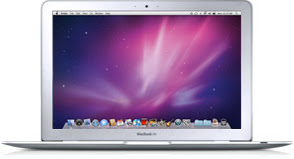My initial career experience in the late 1990s came at a time of Web 1.0, amidst the dot-com frenzy. It was a badge of honor to work late, and even after leaving the office, it was assumed you were on call to respond to product ideas, releases or customer issues. With the potential opportunity being so high, the challenge was to see if you could deliver the best possible products and experience, despite having a lean staff, and there was a constant question of whether you were doing all you could. This drive, whether shared by all colleagues, or whether exhibited by keeping near-nocturnal hours or simply outproducing everyone else, is one that I have had a hard time shaking, as I know at times, I can find myself being hyper-competitive. On the occasional times I've talked to jobhunters and recruiters in past years, I've easily handed that over as a weakness, that while I've been "always on", when others are not as committed, it bugs me, and I question their desire and drive to achieve.
I hate losing. I hate not seeing a result be as good as it possibly could be. I hate turning in a project or a product that is not to the best it could be. I believe in executing quickly, but not if it means sacrificing personal responsibility or standards. And I know I am just as competitive out of the office or off the Web, making sure I win at cards or board games, or beat my friends at bowling. If I don't, then I'll know where I screwed up, and remember it the next time I get a chance to redeem myself.
The best companies and people in business and technology refuse to compromise, even in the face of incredible challenges. The ones that are revered do not concede the battle for product quality, scale, reach or speed.
Take for example Don Dodge's solid and transparent description of how Google sets goals and measures success. A recent transfer from Microsoft, Dodge recounts how he submitted quarterly objectives, which he thought were "aggressive yet achievable", and they were rejected. Why? Because his manager said they "needed to set stretch goals that seemed impossible to fully achieve." He adds, "you can’t achieve amazing results by setting modest targets. We want amazing results. We want to tackle the impossible."
I got a picture of a similar discussion this week when I visited FamilyLink.com in Utah for a single-day visit. Without revealing the details of the conversation, one engineer was challenged to raise the target for a key feature's adoption curve beyond his initial estimate. As with Google, the push to meet this high goal would be set to find a way to achieve the impossible. It's no doubt part of why the company was ranked by comScore as the fastest-growing Web site for December of 2009. The high target was not set to guarantee failure, but instead, to enable success - and the culture was configured to help the team members achieve their full potential, not to reach a lower number, and accept mediocrity.
In a week dominated by iPad news out of Cupertino, we gained a window of insight into one of the most driven people on the planet, Apple CEO Steve Jobs, who reportedly characterized software developer Adobe as "lazy", adding, "They have all this potential to do interesting things but they just refuse to do it." Steve Jobs, and his team are notorious for perfecting their products down to the pixel and down to the millimeter and doing things over and over again to get them "right", not just "acceptable". One can imagine the fun and excitement that would take place if he were to get the opportunity to run Adobe for 100 days, cutting the fat and finding people to focus in a way where they are not today.
Part of what keeps me excited about Silicon Valley, and what attracts me to finding out more about the entrepreneurs driving the next generation of startups, or exchanging ideas with fellow writers and curators on the Web, is seeing this drive for greatness and refusal to compromise. It can be pretty easy to tell when some people have the drive, and also easy to tell when others don't. Those that slip deadlines, or ship mediocre products, or don't respond to support issues, or leave the office at 5 o'clock to get home in time for primetime TV are easily exposed.
I'm not 22 years old any more, like I was in 1999, when there was little keeping me from being 100 percent dedicated to the job. Now, staying a few extra hours at the office, or embedded in my laptop at home, takes time away from my wife and the twins. While I wouldn't exchange them for anything, I do sometimes get jealous at the opportunity some Valley leaders have to feed the fire in their belly to achieve and achieve. I dream of finding a team that wants to put sleeping bags under the desks, like Jerry Yang of Yahoo! was always said to have done, and finding a team that is just as excited about talking shop on a Sunday as they are on a Tuesday. (If you've ever seen the reverse, it too can be draining)
It's part of why I often say, "Sleep is a waste of time. And unproductive."
Now that there are so many outlets on the social Web for us to see what people are doing, and sharing, and writing and thinking, we have more and more ways to find out how people are using their work time and their leisure time. There's a good reason that Steve Jobs and his direct reports aren't posting their every nuance to microblogging sites. There's a reason Sergey Brin and Larry Page only surface on rare occasions at corporate events. These guys, and many many others like them, have a drive to succeed and never accept second best or treat failure as an inevitability. It is a lifelong race that has no finish line, and they can never stop. I may not be scoring patents and writing the best code on the planet, but I do not want to be second-best. I want to win on virtue of being consistent, driving quality, thinking in a way that is differentiated, and being active in a beneficial way in as many places as I can to distribute value. If you can achieve, never accept the opportunity to not do your best, and expect the same from everyone.
















